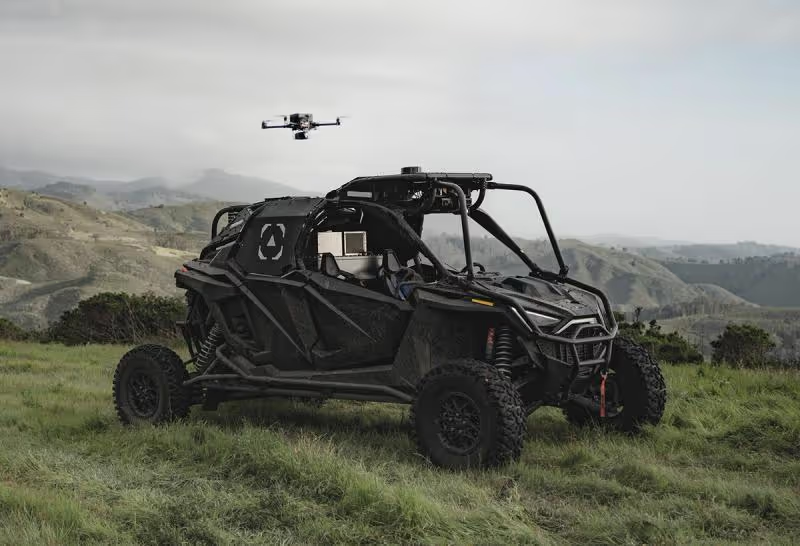
At Scout AI, we envision a future where intelligent, autonomous robotic agents transform the landscape of national defense, enabling unprecedented capabilities and strategic advantage. Our mission is to build the brain for the largest robot army in the world, equipping every military asset across air, land, sea, and space with advanced, embodied artificial intelligence that thrives even in denied environments.
We are pioneering foundational AI technology that integrates perception, language, and action in real-time, driving a new era of warfighter-level versatility and autonomy for defense robotics. Through relentless innovation and real-world testing, our solutions empower the U.S. military to operate with intelligence and independence previously unattainable.
Scout AI exists to redefine the possibilities of robotic autonomy in defense, bridging cutting-edge AI research with tangible field applications. We are committed to shaping a future where intelligent machines act as crucial allies for those defending our borders, bringing transformative impact and security through technology.
Our Review
We'll admit it—when we first heard about Scout AI's mission to build "the largest robot army in the world," we had flashbacks to every sci-fi movie that didn't end well. But after digging into what founders Colby Adcock and Collin Otis are actually building, we found ourselves genuinely impressed by their approach to defense robotics.
Scout AI isn't trying to reinvent warfare or build killer robots. Instead, they're solving a surprisingly practical problem: most military robots today are basically expensive remote-controlled toys that need constant human babysitting.
The "Brain" That Changes Everything
What caught our attention is Fury, Scout's foundation model that acts like a universal AI brain for defense robots. Think of it as ChatGPT, but instead of writing emails, it's helping robots navigate battlefields, interpret commands, and make split-second decisions when communications go dark.
The vision-language-action system is particularly clever—robots can literally see their environment, understand natural language orders, and execute physical actions autonomously. No more "turn left 30 degrees, move forward 50 meters" radio chatter that gives away positions.
Why the Timing Makes Sense
Scout's emergence feels perfectly timed. The defense world is scrambling to modernize after watching Ukraine demonstrate how cheap, smart drones can outmaneuver expensive traditional weapons. Every military branch wants autonomous systems, but nobody's cracked the "general intelligence" problem for robots operating in chaotic, unpredictable environments.
What's refreshing is their modular approach—Fury can work with existing military hardware, not just Scout's own G01 and A01 platforms. That's smart business and smart strategy.
The Reality Check
Here's what gives us confidence: Scout isn't just another Silicon Valley startup with big promises and no customers. They've already secured multiple DoD contracts and raised $15 million from serious defense investors like Booz Allen Ventures. When you're getting Pentagon dollars before your official launch, you're probably onto something real.
The founders bring genuine credibility too—Adcock's board role at Figure AI shows he understands robotics at scale, while Otis built autonomous systems at Uber and Kodiak. These aren't academic researchers; they're builders who've shipped real products.
Scout AI represents the kind of defense innovation we actually want to see: making existing systems smarter and more capable, rather than just building bigger weapons. If they can deliver on their promise of "warfighter-level versatility" in autonomous systems, they might just change how modern militaries operate.
Fury foundation model: Vision-Language-Action AI for defense robotics
Autonomous decision-making in GPS- and communications-denied environments
Embodied AI designed for military ground, air, sea, and space robots
Modular hardware platforms: G01 ground vehicle and A01 aerial drone
Continuous real-world testing and iterative software improvement








